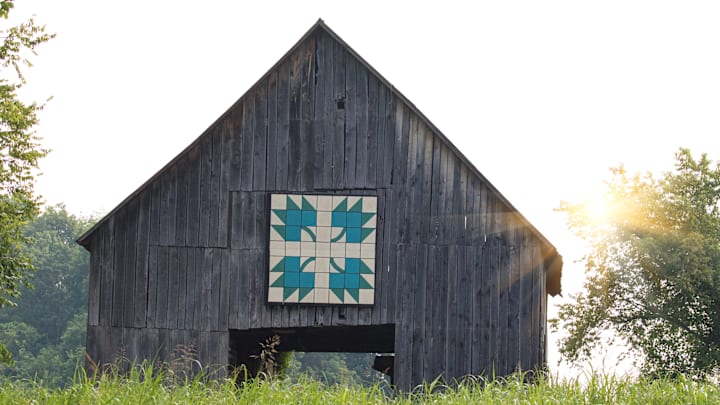Spend enough time driving and you’ll start to question the roadside fixtures you take for granted. After figuring out the purpose behind the brightly colored balls on power lines and the metal stars on old houses, you may be curious to know why so many barns have square quilt patterns painted on them. Though the designs can be traced to American folk traditions, they’re part of a contemporary movement.
According to The Seattle Times, an Ohio resident named Donna Sue Groves popularized the trend in the early 2000s. She had purchased a farm in Adams County with her mother, Maxine, more than a decade earlier. The property came with an old tobacco barn, and Donna wanted to brighten up the plain exterior. Eventually she came up with a plan to decorate the structure while paying homage to her mother’s love of quilting at the same time.
Groves, who was a staff member of the Ohio Arts Council, shared her idea with her community. Her barn wasn’t the only building that could benefit from an eye-catching makeover. By painting quilt block patterns on barns along roads and trails, Adams County could boost its artistic profile and attract tourists. The county unveiled its first painted quilt square in 2001, and soon the designs were popping up on structures throughout the area. Today they can be spotted in almost every state and Canada.

Many of these murals are part of organized quilt barn trails. Communities will map out the routes ahead of time and mount painted 8-by-8-foot squares to roadside barns (or other buildings) they’ve identified. Towns publicize the location of their trails so tourists can see as many quilts as possible on their visit.
Though quilt barns didn’t take off until the 21st century, the patterns themselves have been around much longer. Many of the squares you see adorning buildings come from real family quilts that have been passed down through generations. So, in addition to being pretty to look at on long drives, quilt barns preserve a colorful part of American history.
[h/t The Seattle Times]
This piece has been updated to reflect that Donna Sue Groves was a staff member of the Ohio Arts Council.
